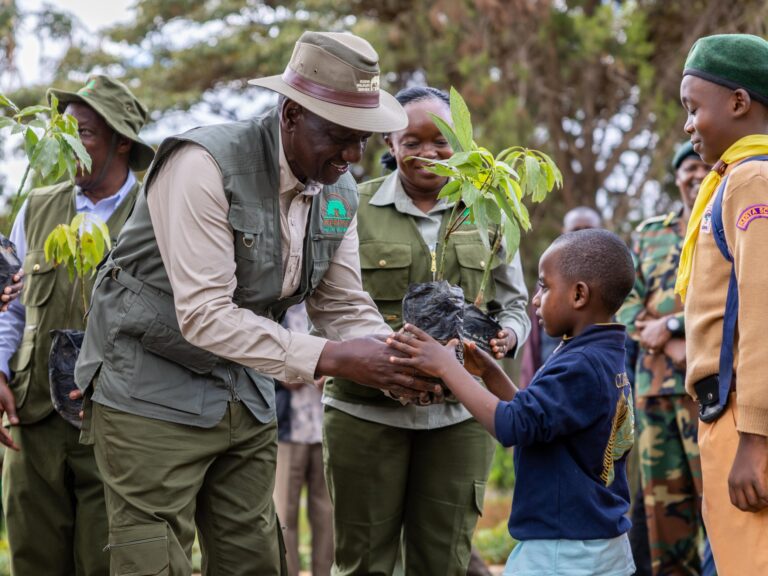
The recently closed down Coral Palm Beach Hotel in Shanzu tells a story of dreams undone by poor conditions and mismanagement. (Trip Advisor).
By Daisy Okiring
In 2023, Kenya welcomed over 1.75 million international visitors, marking a steady recovery for its billion-shilling tourism industry post-COVID. Safari lodges, tented camps, and boutique hotels peppered across iconic landscapes—from Samburu’s dry plains to the emerald forests of Mount Elgon—were supposed to be the golden ticket for investors and communities alike. But behind the glossy photos and Instagram hashtags, a different story is unfolding—one that few tourists ever see.
Across Kenya, dozens of once-promising eco-tourism projects now lie in ruins. Roads built to access them are swallowed by weeds. Swimming pools are dry and cracked. Signposts pointing to “luxury wilderness retreats” now lead to empty shells guarded only by curious baboons.
Why did so many high-end tourism ventures vanish almost as soon as they began? The answer lies at the uneasy crossroads of climate change, poor planning, and corruption—where idealism collided with drought, deception, and denial.
The Mirage of Safari Ambitions
Tourism accounts for more than 10% of Kenya’s GDP and is one of its top foreign exchange earners. Government figures show that over 70% of visitors come to experience the country’s natural wonders—its national parks, beaches, and unique biodiversity. But the landscapes that once offered a stage for Kenya’s global tourism brand are shifting underfoot.
Between 2010 and 2020, over 47 eco-tourism ventures were launched in arid and semi-arid counties like Isiolo, Laikipia, Samburu, and parts of Kajiado. These projects, many of them billed as sustainable and community-driven, were meant to generate jobs, preserve nature, and offer authentic African experiences to high-end clientele. But a report by the African Conservation Centre in 2022 found that 30% of these investments had either stalled midway or been abandoned altogether—victims of extreme weather, poor water availability, or investor withdrawals.
“People underestimated how volatile the climate had become,” explains Dr. Jane Nkirote, an environmental planning expert formerly with the National Environment Management Authority (NEMA). “You can’t build a luxury camp next to a river that dries up every other year. Some of these sites were operational for just one or two seasons before collapsing.”
Read more: How waste and poor planning are suffocating Nairobi’s estates
The impacts of climate change in Kenya are not theoretical. According to the UN Environment Programme, East Africa is warming at a rate 1.5 times the global average. Rainfall patterns have become increasingly unpredictable, and prolonged droughts are no longer occasional—they are routine. The 2020–2023 drought was the worst in 40 years, displacing over 3 million people and killing thousands of livestock. For water-hungry tourism operations, especially those in remote regions without backup infrastructure, such shocks can be terminal.

When Corruption Undermines Conservation
In a well-governed world, tourism developments in ecologically sensitive areas would be scrutinized rigorously. Kenya requires environmental impact assessments (EIAs) before construction begins on any major project, particularly in or near protected areas. But in reality, these assessments often serve as little more than paperwork to be rubber-stamped.
“There are projects that were approved without any scientific basis,” admits a retired NEMA officer who spoke on condition of anonymity. “In some cases, site visits weren’t even conducted. If you paid the right person, your lodge would pass.”
A 2022 audit by Transparency International and Nature Kenya found that nearly 40% of tourism-related EIAs reviewed between 2015 and 2020 had irregularities—ranging from falsified public participation records to omission of key environmental risks. This allowed tourism camps to be erected on riverbanks, near wetlands, and even inside migratory corridors for elephants and antelope.
For many communities, this was not just mismanagement—it was betrayal. “We were promised jobs, water tanks, and a school,” says 63-year-old Mary Naitore from a village outside Kajiado where a multimillion-shilling lodge shut down less than two years after opening. “All we got was noise, fences, and then silence.”
The African Development Bank estimates that from 2013 to 2022, more than $4.5 billion in nature-based tourism funding across Africa was misused, misallocated, or lost due to poor governance and fraud. Kenya, despite its strong tourism brand, is no exception.

The Human Cost of Deserted Tourism
While investors may be able to cut their losses, local workers and communities often don’t have that luxury. When a safari lodge collapses, the ripple effect touches not only staff but also nearby artisans, transport operators, small-scale farmers, and schools funded by tourism levies.
“We lost everything when they packed up,” says Peter Lempaka, who worked as a chef at a defunct luxury tented camp in the Ewaso Nyiro region. “They didn’t even pay our last salary. We heard it was climate problems—but we saw guests until the end. It felt like they just gave up on us.”
Globally, the World Bank reported that climate-related disasters caused a 38% increase in tourism job losses from 2019 to 2023. In Africa, where a significant portion of the tourism workforce is informal and lacks job security, the vulnerability is even greater.
Read more: Rwanda urged to embed agroecology and animal welfare
Kenya’s rural areas, which host most of its conservation tourism, are particularly at risk. As temperatures rise and rainfall patterns become more erratic, communities that depend on eco-tourism are increasingly finding themselves without alternatives. The erosion of trust and income is leading to a dangerous trend—retaliatory environmental degradation.
“There’s a place near Marsabit where a collapsed tourism project led locals to cut down every tree planted for the lodge,” recounts a conservationist who works with the Northern Rangelands Trust. “They said if the trees didn’t feed them, at least the charcoal would.”

The Ghosts That May Rise Again
While many projects now sit idle, some are being given a second chance through innovation and community partnerships. The Northern Rangelands Trust has successfully repurposed a failed eco-lodge in Westgate Community Conservancy into a wildlife ranger station and education hub. Other organizations, like the Mara Elephant Project, are advocating for government zoning policies that would prevent high-risk developments in climate-vulnerable areas.
In 2023, the Ministry of Tourism announced the development of a National Tourism Blue Print aimed at identifying high-risk ecological zones and regulating development through stricter climate and biodiversity screening. A new Green Tourism Rating System is also being piloted to score lodges not only on aesthetics or service quality, but on real environmental compliance and resilience.
But experts warn that regulations alone won’t solve the problem unless the culture of impunity is addressed. “We need to stop approving projects just because they sound good or promise dollars,” says environmental lawyer Brenda Mwangi. “What we need is a hard reset—climate accountability, transparency, and an end to shady deals.”
Renowned conservationist and UNEP Champion of the Earth, Dr. Paula Kahumbu, agrees. “Kenya has an opportunity to lead Africa in rethinking tourism. But we have to learn from our ruins. Sustainable tourism isn’t about good PR. It’s about protecting people and planet in equal measure.”

Ruins That Speak
The broken windows, fading paint, and overgrown paths of Kenya’s ghost lodges are more than architectural failures. They are cautionary tales—etched in concrete and dust—of what happens when greed, hubris, and climate denial build castles in the sand.
As global attention turns toward sustainable tourism and climate adaptation, Kenya must confront this uncomfortable truth: ambition without foresight is not progress—it is a liability.
The country still holds the keys to a more resilient future. Its landscapes remain breathtaking. Its communities are eager partners. Its conservation legacy is globally respected. But if it continues to greenlight tourism projects on vulnerable land, in water-scarce areas, without community consent or climate wisdom, it will keep adding to a growing graveyard of ruined promises.
The ghosts of Kenya’s tourism past are not silent. They warn us, even now, from crumbling verandas and sun-bleached signboards: Build wisely, or not at all.




2 thoughts on “Climate change and corruption behind Kenya’s abandoned tourist destinations”
Comments are closed.